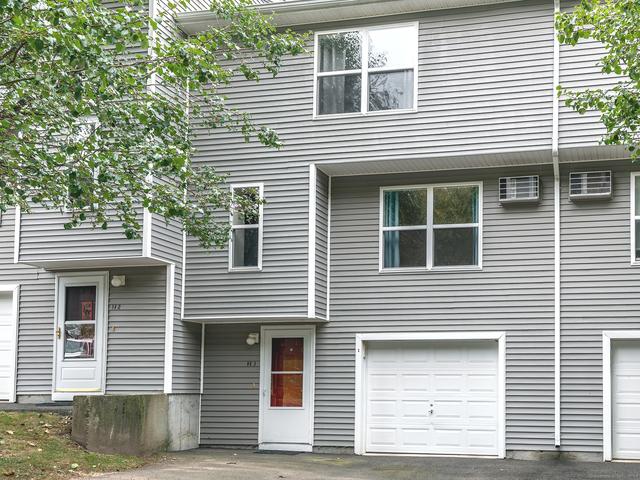When it comes to real estate, the mantra “location, location, location” is not just a catchy phrase; it’s a fundamental principle that can make or break an investment. Whether you are a seasoned investor or a first-time homebuyer, understanding the significance of location is essential. In this blog post, we will explore why location is so critical in real estate, the factors that influence it, and how to evaluate potential properties based on their location.
What Makes Location So Important?
- Value Appreciation
One of the primary reasons location is paramount in real estate is its direct impact on property value. Properties in desirable locations tend to appreciate over time, leading to significant returns on investment. Factors such as proximity to amenities, quality schools, low crime rates, and desirable neighborhoods can elevate property values. Conversely, properties in less desirable areas may struggle to maintain value, making them a riskier investment. - Market Demand
Location influences market demand. Properties in sought-after areas, like urban centers or waterfront locations, typically experience higher demand, leading to competitive bidding and higher sale prices. Understanding local market dynamics can help investors identify up-and-coming neighborhoods that may offer long-term value. According to RealtyTimes, keeping an eye on emerging markets can lead to smart investment decisions. - Rental Potential
For real estate investors interested in rental properties, location is crucial for attracting tenants. Areas near public transportation, job centers, and recreational facilities often have higher rental demand. Landlords can charge a premium for properties in prime locations, ensuring a steady cash flow. Additionally, properties in popular areas may experience lower vacancy rates, further enhancing their attractiveness as rental investments.
Key Factors Influencing Location
- Proximity to Amenities
Accessibility to amenities such as grocery stores, parks, restaurants, and entertainment venues significantly affects a property’s desirability. Buyers and renters are often willing to pay more for homes that offer convenience. Proximity to public transportation and major highways is also a significant factor, as it provides ease of access for commuters. - Quality of Schools
For families, the quality of local schools is often a top consideration when choosing a neighborhood. Areas with highly-rated schools attract families seeking to provide their children with quality education. Properties located within good school districts tend to maintain higher values and have lower turnover rates, making them solid investments. - Safety and Crime Rates
Safety is a priority for most homebuyers and renters. Low crime rates in an area contribute to its overall desirability. Prospective buyers often conduct thorough research on neighborhood safety before making a decision. Properties in safe neighborhoods are more likely to appreciate and retain value over time. - Future Development Plans
Investigating future development plans can provide insight into an area’s potential for appreciation. Cities often publish plans for infrastructure improvements, commercial developments, and zoning changes. Areas slated for revitalization or expansion may offer lucrative investment opportunities, while others may face challenges that could affect property values. - Community and Lifestyle
The overall vibe of a neighborhood can greatly influence property demand. Areas with vibrant community life, cultural events, and recreational activities attract individuals looking for a certain lifestyle. Factors such as walkability, access to outdoor spaces, and local events can play a significant role in a location’s appeal.

Evaluating Locations: Key Considerations
- Research Local Market Trends
Understanding local market trends is essential for assessing a location’s potential. Analyzing property sales data, rental rates, and market forecasts can provide insight into whether a particular area is experiencing growth or decline. Tools like the Multiple Listing Service (MLS) can be invaluable for this research. - Visit the Area
Physical visits to potential neighborhoods allow investors and homebuyers to experience the area firsthand. Observing the community, the condition of surrounding properties, and the overall atmosphere can provide insights that online research may miss. Speaking with local residents can also offer valuable perspectives. - Consult Real Estate Professionals
Engaging with real estate agents and local experts can help navigate the complexities of location evaluation. Professionals can provide in-depth knowledge about neighborhoods, market trends, and investment opportunities. Their insights can guide buyers toward properties with strong potential based on location. - Consider Long-Term Goals
Evaluating a location should align with your long-term investment goals. Whether you’re looking for a starter home, a rental property, or a forever home, consider how the location fits into your future plans. Factors such as job stability, family needs, and lifestyle preferences should all play a role in your decision-making process.
Conclusion
In the world of real estate, the importance of location cannot be overstated. It directly impacts property value, market demand, and rental potential, making it a crucial factor for investors and homebuyers alike. By understanding the key factors that influence location and employing strategies to evaluate potential properties, individuals can make informed decisions that align with their financial goals.
Investing in real estate is often a long-term commitment, and choosing the right location is vital for success. As you embark on your real estate journey, remember that location will always be a pivotal element that can shape your investment’s future. Whether you’re looking to buy a home or invest in rental properties, always prioritize location and ensure it aligns with your vision for the future.





